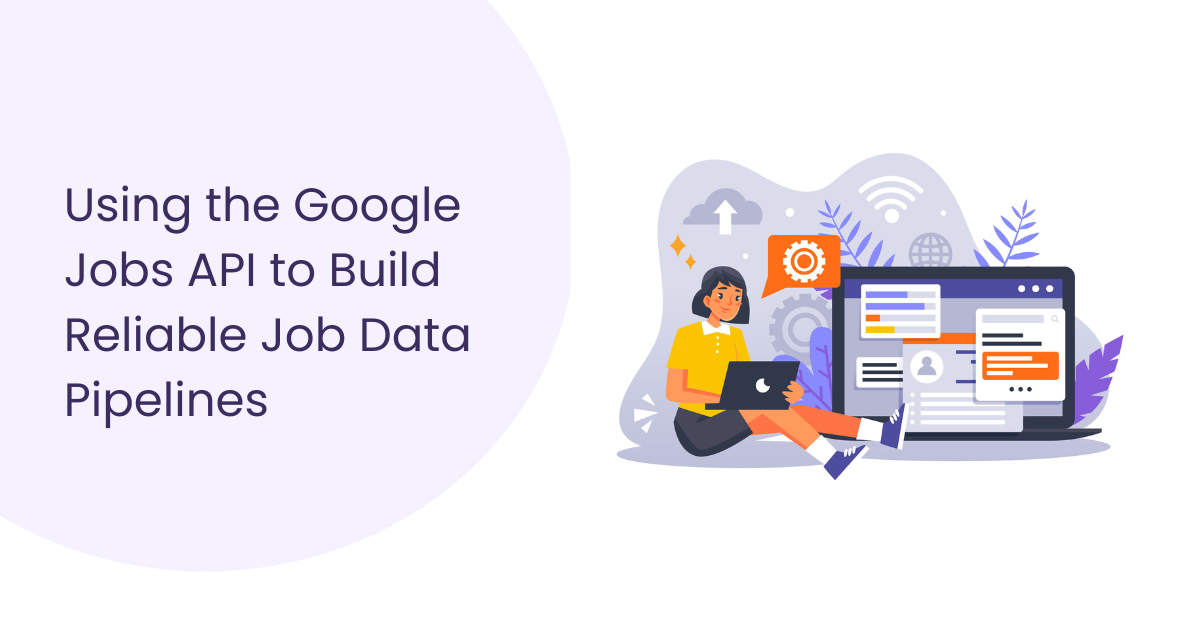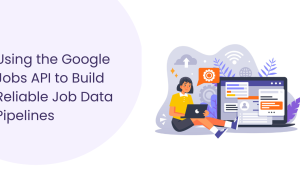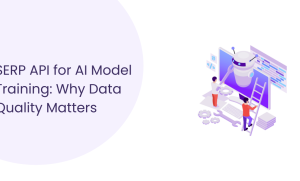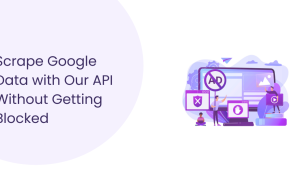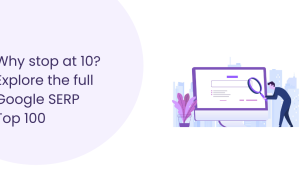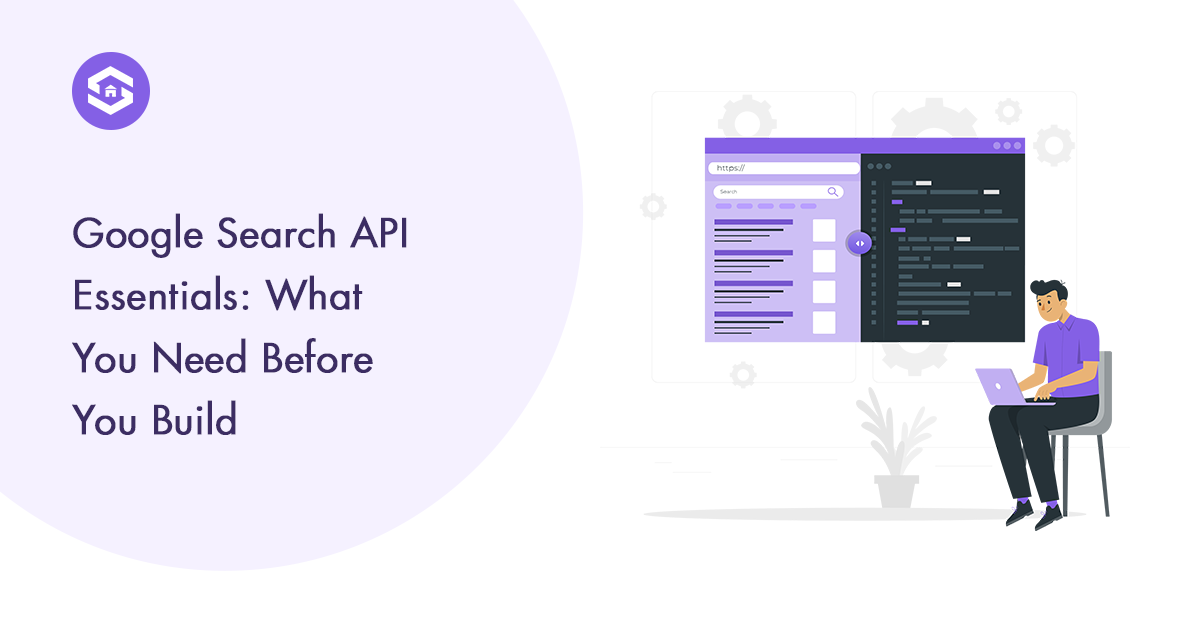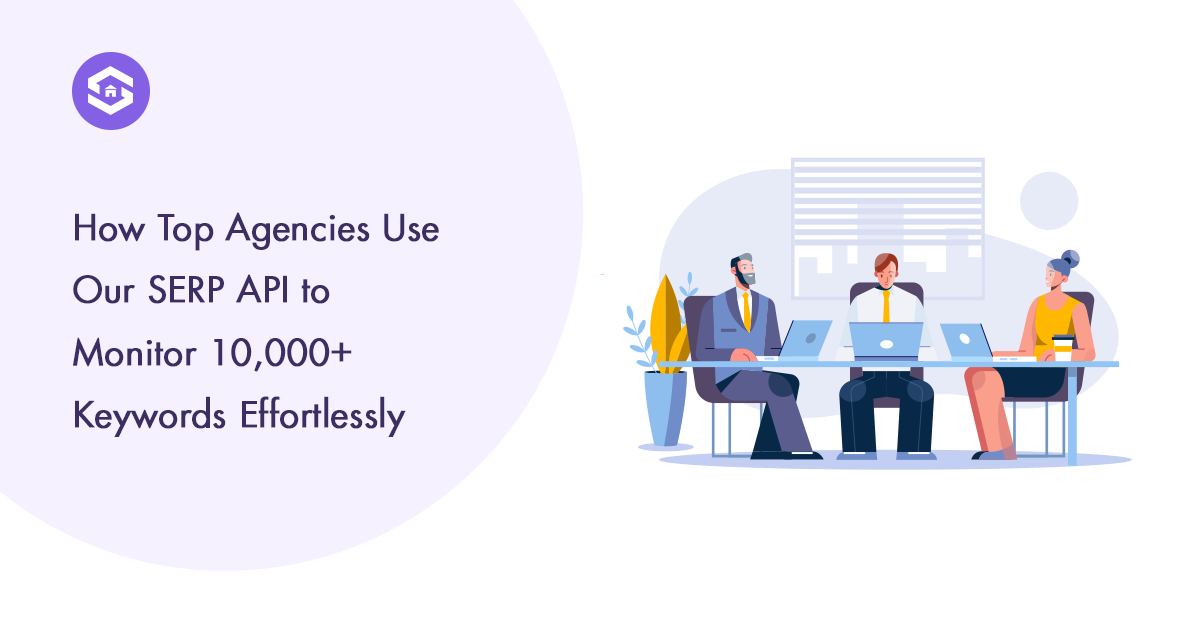Table of Contents
Table of Contents
Managing job data at scale has always been a time-consuming task for platforms that rely on accurate listings. Job posts move quickly, duplicates appear across multiple sources, and formats vary from one site to another. A system built on manual checks or HTML scraping tends to struggle the moment the data load grows.
The Google Jobs API offers a way to avoid these issues and work directly with structured job information. Instead of navigating inconsistent layouts or unstable scraping scripts, teams receive clean, organized JSON data pulled from Google’s job search results. This approach ensures consistency, reduces maintenance, and supports more reliable job-driven applications.
For developers building job boards, hiring dashboards, or automation workflows, this API provides a dependable foundation that eliminates many of the typical overheads associated with job data collection.
What Is the Google Jobs API?
The Google Jobs API is a provider that helps you pull job listings directly from what Google already indexes. Instead of collecting this data yourself, the API provides a seamless set of process information compiled from various websites. You can use this information inside your own apps, dashboards, or any internal device that needs up-to-date job data.
With configurable parameters such as keyword, job title, city, region, language, and job type, the API allows platforms to deliver job results that feel current and relevant. Because the data originates from Google’s own index, the listings tend to be more complete and more accurately formatted than traditional scraped sources.
For teams looking to automate job data updates, the API removes the need to:
- scrape career sites
- interpret varied HTML structures
- build multiple crawlers
- monitor changes to third-party websites
It serves as a single, stable data pipeline.
Why Developers and Businesses Use the Google Jobs API
The reasons vary depending on the product, but a few advantages consistently stand out.
1. Access to real-time job listings
Applications built around job data benefit from having listings that stay aligned with market activity. Because the API tracks what Google indexes, updates reach platforms faster and with fewer inconsistencies.
2. Structured and predictable output
The API returns JSON with uniform fields: title, company, salary range, job type, posting date, and more. Teams avoid the usual cleanup and mapping work that comes with scraped HTML.
3. Faster development and integration
With clear parameters and a simple request-response format, the API fits naturally into job boards, search engines, portfolio sites, recruitment platforms, and internal HR tools. This often shortens development cycles.
4. Reliability compared to scraping
Scraping stops working when a layout changes, a bot filter is introduced, or a page becomes inconsistent. The API avoids these disruptions, reducing the maintenance burden on engineering teams.
For long-term stability, the API is significantly more dependable than traditional scraping infrastructure.
How Google Displays Job Data on Search
Google’s job search interface affords information in a layout designed for clarity and speed. The listings that seem there comply with an in-depth processing workflow that guarantees the records remain constant and usable.
Below is a simplified view of that process:
Crawling and detection
Google’s crawlers scan company career pages and job boards, identifying job posts marked with JobPosting structured data. This markup includes fields such as title, description, location, salary, employment type, and date posted.
Parsing and normalization
Once detected, Google extracts each field and converts the content into internal formats so listings can be displayed uniformly regardless of source.
Duplicate reduction
Many job listings appear on multiple platforms. Google uses deduplication to avoid showing repeated entries and generally promotes the employer’s original listing.
Aggregation and ranking
Google evaluates listings based on relevance, quality of structured data, freshness, and alignment with search intent. Matching and ranking rely on machine learning models.
Display and interaction
Jobs are presented as interactive cards. Filters allow users to refine results by job type, location, experience level, and posting date. A click leads directly to the employer or job board source.
Understanding this process helps businesses optimize their listings and helps developers anticipate what type of data structure their platforms will interact with.
Common Use Cases for the Google Jobs API
Organizations across various industries use the API to simplify workflows, improve accuracy, and reduce operational overhead. Below are typical scenarios where the API plays a crucial role.
1. Improving Job Board Reliability
Platforms that aggregate job listings must manage multiple sources at once. Without a dependable system, outdated entries and inconsistent formatting can appear quickly.
The Google Jobs API helps by:
- providing fresh listings
- ensuring consistent structure
- lowering error rates from HTML scraping
- reducing manual cleanup
This results in a more reliable user experience.
2. Building Job Dashboards and Automation Tools
Developers building new job-driven products often prefer the API because it avoids the engineering cost associated with maintaining scrapers.
It supports:
- quick integration
- stable data pipelines
- efficient filtering
- reduced development time
This allows teams to focus on features rather than data collection mechanics.
3. HR Teams Monitoring Job Market Trends
Job listings offer insight into market behavior. HR departments use API-powered data to monitor:
- competitor hiring activity
- changing salary trends
- emerging skill demands
- job market patterns in specific regions
These insights help align recruitment strategies with current market conditions.
Introduction to SERPHouse
If you want to apply Google Jobs information without dealing with scrapers or complicated setups, SERPHouse makes the method truthful. Think of it as a provider that draws real-time job results from Google and offers them back to you as easy, ready-to-use JSON.
You can look up jobs by keyword, city, skills, job type, or device. And if you need more control, like paging through long result lists or sorting them, the API already includes those options.
Many developers choose SERPHouse because it removes the setup work. You don’t need to build your own tools or maintain scripts. You send a request and get reliable job data right away.
If you’re creating a job board, a hiring dashboard, or tools for recruiters, this saves a huge amount of time — time that would normally be spent fixing scrapers or keeping your own system alive.
Final Thoughts
Accurate job data matters for any product that depends on current listings or market trends. The Google Jobs API makes this easier by giving you structured and reliable job information without relying on fragile scrapers or constant manual updates.
If you’re building a hiring tool, a job search feature, or a dashboard for market research, using this API cuts down a lot of the routine work. It also helps keep your data steady and up to date. And with services like SERPHouse handling much of the integration, using an API has become one of the simplest and most scalable ways to manage job listings today.

